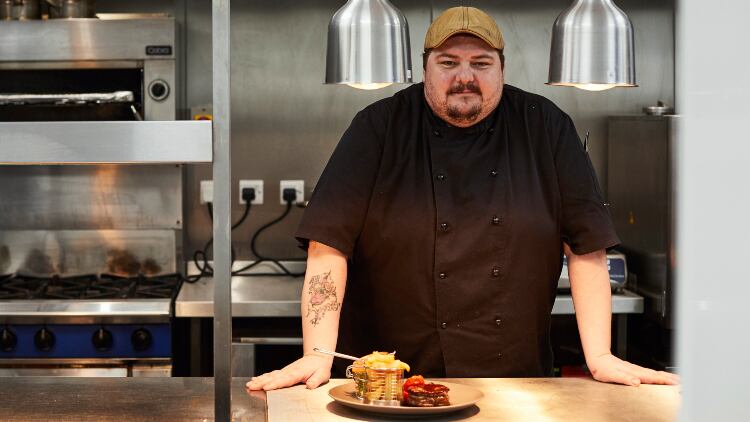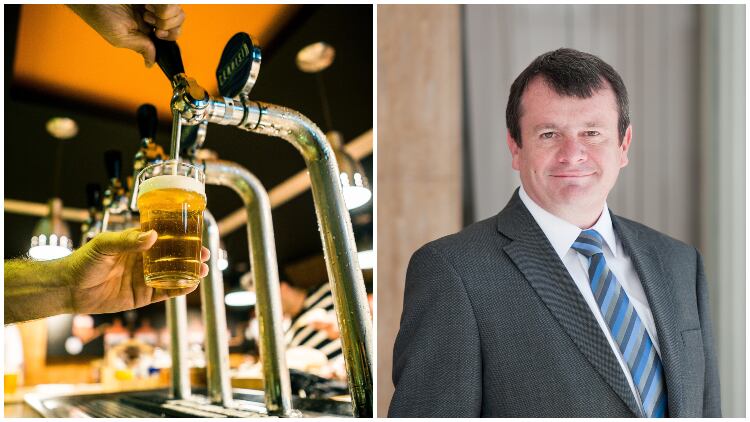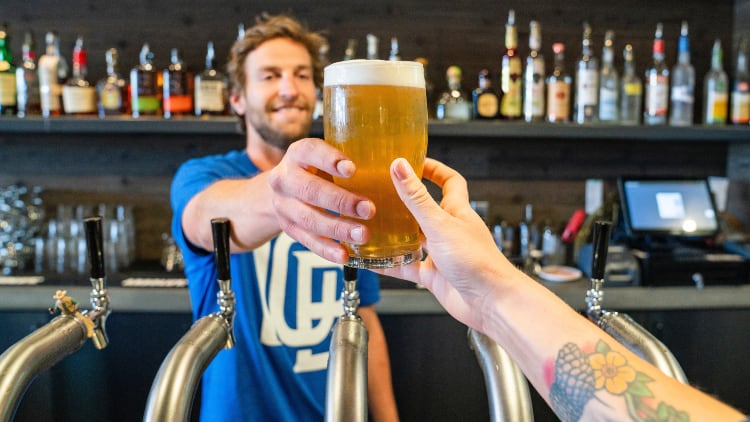Food forms a large part of the offering for customers at the majority of pubs, and increasingly it is becoming an important offering for employees too.
When James Lyon-Shaw and Jamie Dobbin created the blueprint for their new pub group – Brucan Pubs – they knew quality food would form the heart of their offering. With Lyon-Shaw’s previous experience running pubs for ETM Group and Dobbin’s background as head chef at The Club at The Ivy, it was inevitable they’d use their expertise to ensure customers visiting their first pub – the Greene Oak, near Windsor – would be served dishes of a high standard.
It wasn’t inevitable that they would also be providing those same high quality dishes to their employees but, as Lyon-Shaw reveals, feeding staff as well as customers was always part of the plan.
“I think it’s something you have to do if you want staff to perform better and last longer,” he says. “The days of chefs living off coffee and cigarettes in the morning and a beer in the afternoon are, thankfully, long gone.”
Brucan Pubs staff food
Brixham gurnard, braised peas, lettuce and mint

We try to use the opportunity of staff food as a training for the team, using menu proteins such as gurnard, which has played a starring roll on our menus since opening. It’s important for us that staff food is both fulfilling and healthy but also represents our menu ethos, giving the team first-hand knowledge of flavour, texture and sourcing.
Gurnards are bizarre-looking fish with a large bony head and a distinctive snow plough-shaped profile. For years they were thrown back or used as bait by fishermen, but in recent years people have realised they make great eating and their popularity is on the rise.
10 servings
Ingredients:
- 10 gurnard fillets, 150g-170g each
- 1.2kg peas, thawed if frozen
- 300g shallots, sliced
- 500g gem lettuce, sliced
- 200g mint, chopped
- 500ml chicken stock
- 50g butter, softened
- 50g flour
- Salt and pepper
- Set oven to 180°C
To make the braised peas, in a medium pan sweat the shallots in 25g of butter and a splash of oil until they are soft and sweet but with no colour. Add the peas and stock and cook rapidly until the peas are tender – it’s important to make sure the stock is boiling to preserve the colour of the peas. Mix the butter and flour in a small bowl to make a roux. Add this a little at a time to the peas to thicken slightly – you may not need all the roux. When the peas and sauce are the consistency of double cream, take off the heat and season with mint, lettuce and salt and pepper. Pour into a large serving dish and keep warm while you cook the gurnard
Place the gurnard fillets on a lightly buttered baking tray and season with salt and pepper.
Bake in the oven for around eight minutes and serve on top of the braised peas, lettuce and mint mixture.
Order any dish
When the Greene Oak opened just over a year ago, team members could order any dish from the pub’s menu to consume before service, or during a break. As well as sustaining them throughout a busy shift, Lyon-Shaw believed that if they ate the same food as the customers, they could be “excited and passionate” about dishes on the menu and be able to confidently recommend them.
Today, ordering from the menu, which includes dishes such as Torbay hake, sea vegetables, mussels and cider sauce and White Park cheeseburger with beer onions, treacle bacon and triple-cooked chips, is still permitted – and actively welcomed – but the pub has created bespoke dishes for staff following feedback.
“Originally we were leaning heavily towards them ordering off the menu, but staff quite rightly didn’t want rich food, so we changed it so there are some lighter, healthier things that send them into service well-fed on a nutritiously balanced diet,” explains Lyon-Shaw.
Eat from the menu
What staff eat, and when, is dependent on shifts. Those working during the quieter, early part of the week have breaks one at a time and eat from the menu in the pub’s dining room. Towards the weekend, when service gets busier and teams are bigger, the pub’s private dining room becomes a staff room where employees come together to eat a ‘family- style meal’, helping themselves to sharing platters of roast chicken, potatoes and vegetables, or fish and salads, in the lull between lunch and dinner.
A similar approach is taken by London-based Hippo Inns. At each of the group’s 13 pubs, staff members working six hours or more are entitled to a meal, although those working less aren’t refused if they request one.
Flexible choices
Each pub has autonomy over what staff are fed. It could be dishes from the menu, specials or a ‘family-style’ dish, like pasta, or a roast, which staff tend to consume during their break in one of the pub’s function rooms.
“It’s quite flexible. We’ll set it up for staff for an hour or two, and make sure they have water on the table,” says operations director Adrian Laws. “If that space is unavailable we just ask the team to cover up their uniform and then we’re happy for them to sit in the pub area and enjoy the ambience.”
With so many pubs now open all day for food and drink, finding a suitable time and place for staff to chow down can present a logistical challenge, but it’s possible with just a little thought.
While the Greene Oak and Hippo Inns use their private dining areas or function rooms as makeshift staff canteens, others, like the Rose & Crown in Romaldkirk in Teesdale allow staff to eat in the inn’s restaurant, which isn’t open until the evening. Here the housekeeping team, or those on the early shift, eat salad or sandwiches at 12pm, while those working the evening shift (3pm to finish) are given a hot meal of their choice before the restaurant opens.
“The team’s small – we have just five full-time front-of-house staff and they all have different tastes,” says operations director Cheryl Robinson, “but the chefs tend to know who likes what and take it into account. Classics like spaghetti Bolognaise are always popular.”
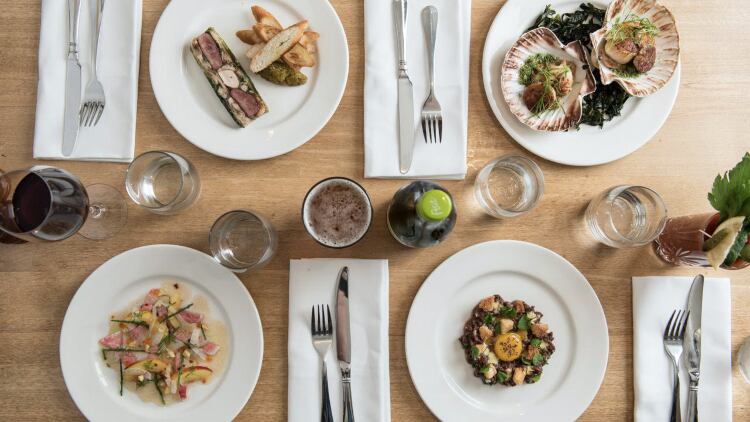
Choosing ahead
The 25-strong Oakman Inns pubco has fed staff since its first site opened in 2007. Staff would initially eat before or after a shift, but the format changed following feedback from the company’s staff forum, says HR director Jill Scatchard.
Now, anyone working a standard shift can choose from four different types of dishes on offer throughout the day – brunch; main course salad; pizza or pasta; and chef ’s special – to eat during their break, either in a private dining room or ‘tucked away’ in a public area.
Staff pre-order from the day’s menu through the EPoS once they know the time of their break. Scatchard says as well as ensuring they get fed at the right time, this method also means chefs can “keep track of any allergies and special requests”.
“The adopted changes...saw us move away from the traditional eat before or eat after a shift as that doesn’t work well in an all-day dining environment,” she says, adding that staff can order off the à la carte menu with a 50% discount, before or after their shift if they want.
“This is a more flexible approach and it’s appreciated by our staff.”
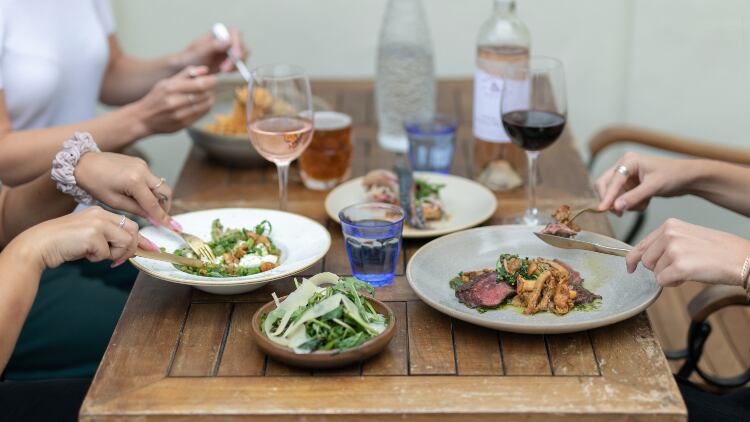
Impact on performance
Indeed, every pub operator supplying their employees with a meal before, during or after their shift notes a positive impact on their employees’ performance, and it’s not just because they have a better understanding of the dishes they are recommending and serving.
As Laws reminds us, working in a pub is a “physically and mentally challenging job”, so it pays to ensure staff are “set up and ready” to work in what can be a high-pressured environment.
The irregular hours pub staff work and their domestic arrangements may also mean they are less likely to find the time to shop and cook for themselves, so at least they are getting “proper food” at work, adds Lyon-Shaw.
“We make sure we’re looking after our staff and keep them healthy which means we have less sick days. Hunger can also put you in a bad mood, so if you want your staff to be bubbly, lively and full of energy, you’ve got to make sure they’ve got some fuel in them.”
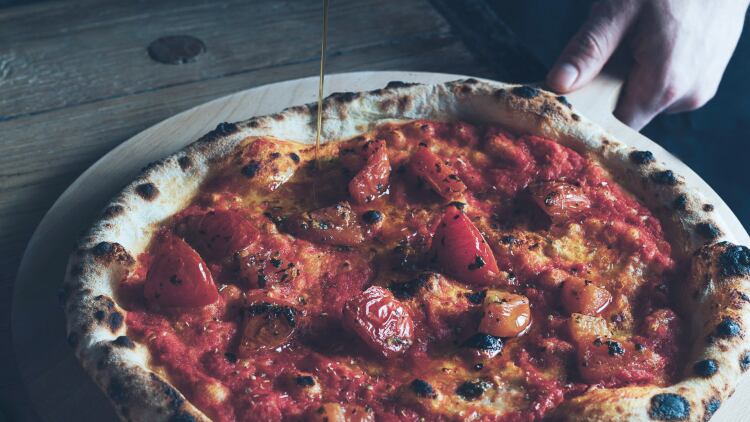
Helps with morale
In cases where the pub is in a remote location, like the Rose & Crown, it is also a necessity.
“It’s tricky for the staff to make their own lunch as we have no staff room or staff canteen facilities,” says Robinson.
“We are also in a very rural location so its not like they can pop to a shop or café.”
But even those, like Laws, operating pubs in built-up areas would prefer that their employees eat on-site with colleagues rather than head for the high street for an uninspiring sandwich on their own.
“This way they can relax and have a chat with a colleague,” he says. “It helps with morale and builds a sense of team, especially if they sit down with someone they might not have much communication with otherwise.”
Scatchard agrees: “In some sites, there might be two or three members of the team from different departments taking a break, so there is also the opportunity to swap stories and socialise.”
While there are many benefits to supplying staff meals, the ultimate one – all operators agree – is that it helps staff feel valued. And this means they are more likely to remain with the company.
“I think the team know they are effectively getting the same quality food as their customers and that is a benefit to everyone,” says Scatchard.

